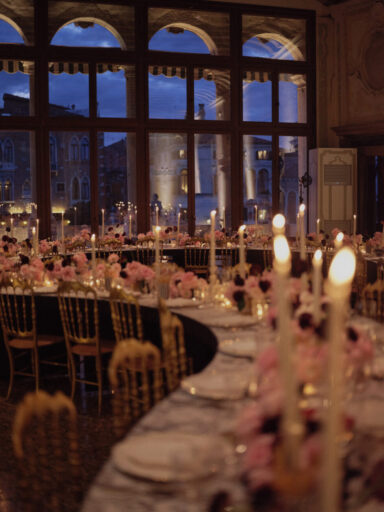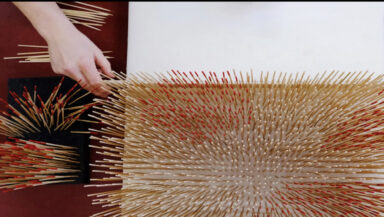The San Marino Pavilion at the Venice Architecture Biennale
What kind of hosts should we be and what kind of hospitality should we offer to produce the future we desire? What are the distinctive lines between host and guest, when viewed through different scalar, temporal, or political lenses? These questions moved the artist Vittorio Corsini for the San Marino Pavilion at the Venice Architecture Biennale. The proposed approach is not only expositional but exploratory and experiential, here the theoretical research takes shape within a research context that is international and multidisciplinary.
Community, food, interspecies, and religion. These are the four categories of inquiry that define the lines of research that led to the creation of Ospite Ospitante, based on the study of the relationships that living beings are able to establish with each other. “The Pavilion is based within an insula that represents a typical micro-community in Venice,” says Commissioner Riccardo Varini, “with the Campo and the Church of San Lorenzo, the neighborhood library, a municipal headquarters, and a home for the elderly. The location of the complex is, therefore, particularly suitable for implementing co-design projects with the local communities, listening to their needs in order to implement a multi-year strategic plan, social, economic, and environmental, of synergistic reactivation of hospitality in the place, within an conception of doing.”

Ospite Ospitante will be divided into two rooms, distinct but connected, conceived as two organisms in tension with each other. The first space, dedicated to the works of Vittorio Corsini, will have the function of decompression. A kind of suspension from the external chaos, encouraging a contemplative dimension, of regeneration of thought on the essential themes and values of being today. In contrast, the second space will transform thought into action. The medium will be co-design workshops with the participation of students, designers, citizens, sculptors, sociologists, farmers, artisans, and passing visitors.
The main theme of the Pavilion is thus translated into the works Vittorio Corsini has created for the occasion, keeping in mind not only the underlying theme of hospitality, but also the nature, history, and morphology of the space in which they are to be placed. The first one (Exercise 2, 2023), consisting of a Plexiglas cube (200x200x200 cm), will be placed in the center of the room and allow one person to enter its interior at a time. Through the simultaneous action of about 2,000 white LEDs, the work will react to human presence with a sort of luminous breath exemplified on human breathing during meditation.

An other dimension shared by three very young protagonists of as many videos (Here everyday, 2023), intent on dancing to “their” music, which, however, remains denied to the viewer. In fact, each of them will be filmed in an absolutely white space, dominated only by the rhythm and energy of the moving body. The silence that will envelop the interior space can melt away, however, thanks to the third work (Welcome chairs, 2023), placed on the street, next to the entrance door. The pair of bronze chairs that welcome the visitor are in fact an invitation to pause and conversation, both for the visitor to the pavilion and for a casual passerby who does not know-or does not notice-that he is on the threshold of an exhibition space. A sculpture in which narrative becomes architectural fact.
A relationship between guest and host that, as the artist explains, derives from an ancient concept “Xenia is the law that in Ancient Greece regulated the relationship between guest and host, a law to which everyone submitted considering the guest a special person, something very close to a God: no one knew who was hiding behind the person knocking at the door. Here the San Marino Pavilion starts from here, from this disposition to receive, to listen, to offer a hand. The works designed for this Biennale all work for this reception, sometimes directly and sometimes indirectly, but always having in mind the possibility of a caress, of a gaze that glimpses or looks beyond the appearance of sedimentation”.


